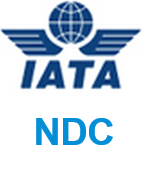- Have any questions?
- Office: +1 (650) 345-8510
- Mobile: +1 (650) 576-6916
- norm@traveltechnology.com
The Role of NDC in a Post Covid-19 World

Thoughts from the UK
April 22, 2020
Travel Tech Investment Opportunities in a Post Covid-19 World
June 1, 2020The recent announcement that beginning June 1st Sabre agents will no longer be able to book Lufthansa flights on the Sabre GDS may be a signal of more changes to come in travel distribution as the industry slowly recovers from the global pandemic. Though the Sabre/Farelogix deal was cancelled, the Sabre/DOJ trial clearly uncovered the airlines continued commitment to transform airline distribution.
First, to be fully transparent, I was an expert witness for the Sabre/DOJ trial hired by Sabre’s legal counsel. Though I did not testify, I did submit an expert report to the court and many of my opinions were echoed in the judge’s ruling. My overall conclusion was to support Sabre’s acquisition based on my belief that NDC has created a new competitive environment for Airline IT and distribution services resulting in more competition for all the distribution platforms including the traditional (e.g. GDS), established (e.g. Travelfusion) and emerging players (e.g. Duffel, Atriis, TP Connects).
Clearly NDC was gaining traction prior to the pandemic, but it is likely that travel distribution transformation will accelerate as the airlines begin to recover. History is a good guide here. After the dot.com bust and 9/11 recession, the OTAs such as Expedia and Booking accelerated their growth. The post Great Recession of 2008-2009 resulted in the emergence of Airbnb as an alternative lodging platform. It is my belief alternative distribution will emerge as a major competitive force for travel aggregation and distribution for the indirect channel (OTAs, travel agencies, TMCs) as the industry recovers.
This is more than a simple issue of cost. In fact, GDS may lower their fees (as indicated in a recent The Beat article) in order capture greater market share. But given the existence of GDS surcharges for many years by the European carriers, many of these costs have already been reduced or passed on to customers. Of course, the US carriers never implemented a GDS surcharges thus putting them in a different economic position in respect to distribution costs. It is essential to understand that the airlines are determined to control the quote and offer more personalized services to travelers. Airlines will need more engagement at the point of sale with all types of travelers to help influence travelers to return to the skies offering unique bundles through NDC. Platforms that facilitate this will have an edge as the travel industry recovers.
The biggest obstacle to NDC adoption has been after ticketing support, but for the last 18- 24 months the travel agency community has been more actively engaged in the NDC effort. This has resulted new levels NDC certification including Full Offer and Order Management, NDC @Scale (currently available for airlines only) and NDC Business Travel Ready specifically designed to support the corporate travel industry. With new aggregators such as Duffel, Atriis and TP Connects providing a platform for travel agents, servicing issues are slowly being resolved within the context of NDC. Farelogix remains and independent entity (for now) and also offers a one-off (single airline or airline group) solution called SPRK for the travel agent community. GDS will continue to be major distribution players, but will face the potential loss of additional large airline groups if they do not offer a competitive way to allow unique NDC offers through the indirect channel.
There is also additional competition for the GDS from the likes of Google who will continue to pursue direct distribution through Google Flights likely embracing NDC and unique offers. Alternative blockchain platforms such as Winding Tree and Blockskye are likely to gain new attention to not only offer direct content at a lower cost, but with a strong focus on reducing the settlement costs associated with travel transactions.
The reality of a post Covid-19 world is that the airlines will continue to bleed money for many months to come and thus will pursue every effort to reduce costs. With NDC maturing and well-funded alternatives emerging, airlines will push on distribution and settlement costs in order to drive to a return profitability.

